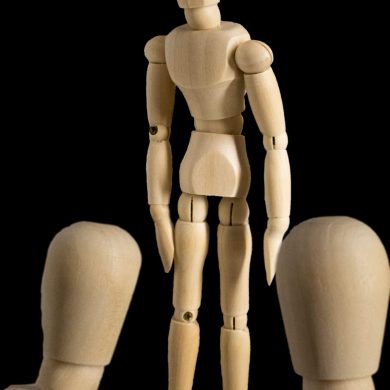By Lily Huang | Staff Writer | SQ Online (2013-14)
When a large hydroelectric dam was constructed near Thailand’s wildlife sanctuary, it flooded large areas of the Chiew Larn National Park Rainforest and drowned many species of indigenous wildlife that were unable to swim safely to shore. Once the largest rainforest habitat in Southern Thailand, the park is now submerged by a large lake, with dozens of scattered forested hill tops as small, isolated islands.
Researchers in Dr. David Woodruff’s research group from the UCSD Division of Biological Sciences examined the ecological impacts of the fragmentation of the rainforest. They witnessed the near-complete extinction of native small mammal species living in the rainforest fragments. All twelve native species were lost from sixteen patches of rainforest within 25 years of their isolation. The researchers did not expect such a rapid disappearance of these protected rainforest communities.

By examining the small native species in Thailand, humans can learn from the ecological impacts of overpopulation in finite space in order to understand the importance of global sustainability efforts. Competition for living space and land for construction, such as building the hydroelectric dam in place of the rainforest, will rapidly destroy natural habitats and decrease global biodiversity.
Structures like these dams negatively affect human lives as well. Because hydroelectric dams require space to hold the dam water, they take over lands that were once human homes and flood the area.
Dr. Woodruff feared that events like the damming of the Mekong river and the loss of fertile coastal plains due to global sea level rise would cause wildlife and humans alike to lose their homes. Woodruff also feared that drastic environmental changes would potentially create 100 million eco-refugees all competing for limited resources. With his research, Dr. Woodruff emphasized the importance of immediate attention to conservation efforts.
In the 1990’s, Dr. Woodruff pioneered a new approach to genotyping wild animals based on noninvasive DNA sampling. He used these non-invasive DNA sampling techniques to identify and monitor the small native species in Thailand. With these non-invasive techniques, students studied chimpanzee hair, endangered bird feathers, and elephant droppings in Woodruff’s lab to rewrite the understanding of the way these species evolved.
Dr. Woodruff initiated the study of local species extinction and genetic erosion in the surviving populations of small mammals on the fragmented rainforest islands. He began monitoring the mammal populations surviving on each island with three former graduate students and a team of international collaborators.
Dr. Woodruff and other conservation biologists used an algorithm model to predict the rate at which the native mammals would go extinct. His team derived an island biogeographic model, which included figures for migration and extinction possibilities. However, what was happening in real life was far worse than what their numbers had predicted. Current extinction rates were two to three times greater than the prediction.
When Dr. Woodruff’s research team re-visited the islands in 2011, they discovered that all the native mammals were gone. In their place was an aggressive species of rat that is typically found around villages and not in the undisturbed forest.
There were two contributing factors that led to the extinction of indigenous species. Native mammals suffered the harmful effects of population isolation from dam construction. On top of that, they competed with an aggressive invasive species– the Malayan field rat. While the Malayan field rat adapted well to the new fragmented islands caused by flooding, the native species adapted poorly to the drastic changes.

Habitat fragmentation caused by dam construction and invading species has proved to be fatal for native wildlife in Thailand. Indeed, the fight for land resources among species needs human intervention to promote conservation.
“To save wildlife you have to save local people from poverty and their understandable need to use the wildlife and natural resources to feed their families, so we need to protect and manage the largest possible areas,” added Woodruff. “Smaller protected areas won’t save nature.”
Ultimately, Dr. Woodruff would like to see humans and wildlife living harmoniously and argues that mass extinction is avoidable by sustaining nature, which is in our own self-interest. His class on conservation (BIEB 176: Conservation and the Human Predicament), which regularly enrolls to full capacity, further explores sustainability for conservation.
Woodruff said, “Much of what I confront is depressing but insist that students should never give up. I see opportunities for everyone to help society through the great transformation to sustainability this century and, in doing so, [help] save wildlife.”
Funding: Funds to support the study were provided by the U.S. National Science Foundation and the National University of Singapore.

Dr. Woodruff quotes Dickens, “’It is the best of times, it is the worst of times.’ I cannot think of a more exciting time to be a biologist.” In the 20 years between surveys, Woodruff has been busy with other projects including studies of the phylogeny of gibbons and the sustainability of collections of animals in zoos. He serves as a Trustee of the San Diego Zoo and is also the Director of the UCSD Sustainability Solutions Institute which fosters interdisciplinary research and educational activities on campus | Photo by Lily Huang
